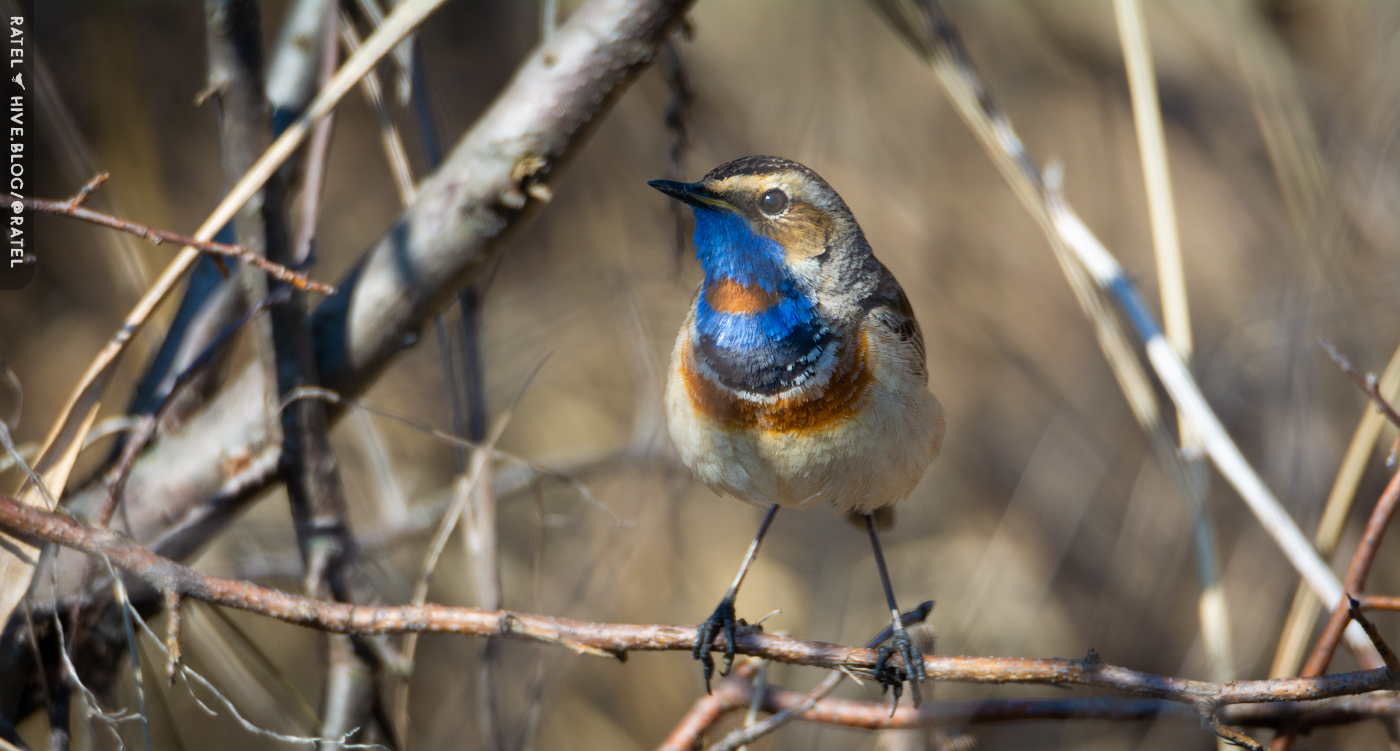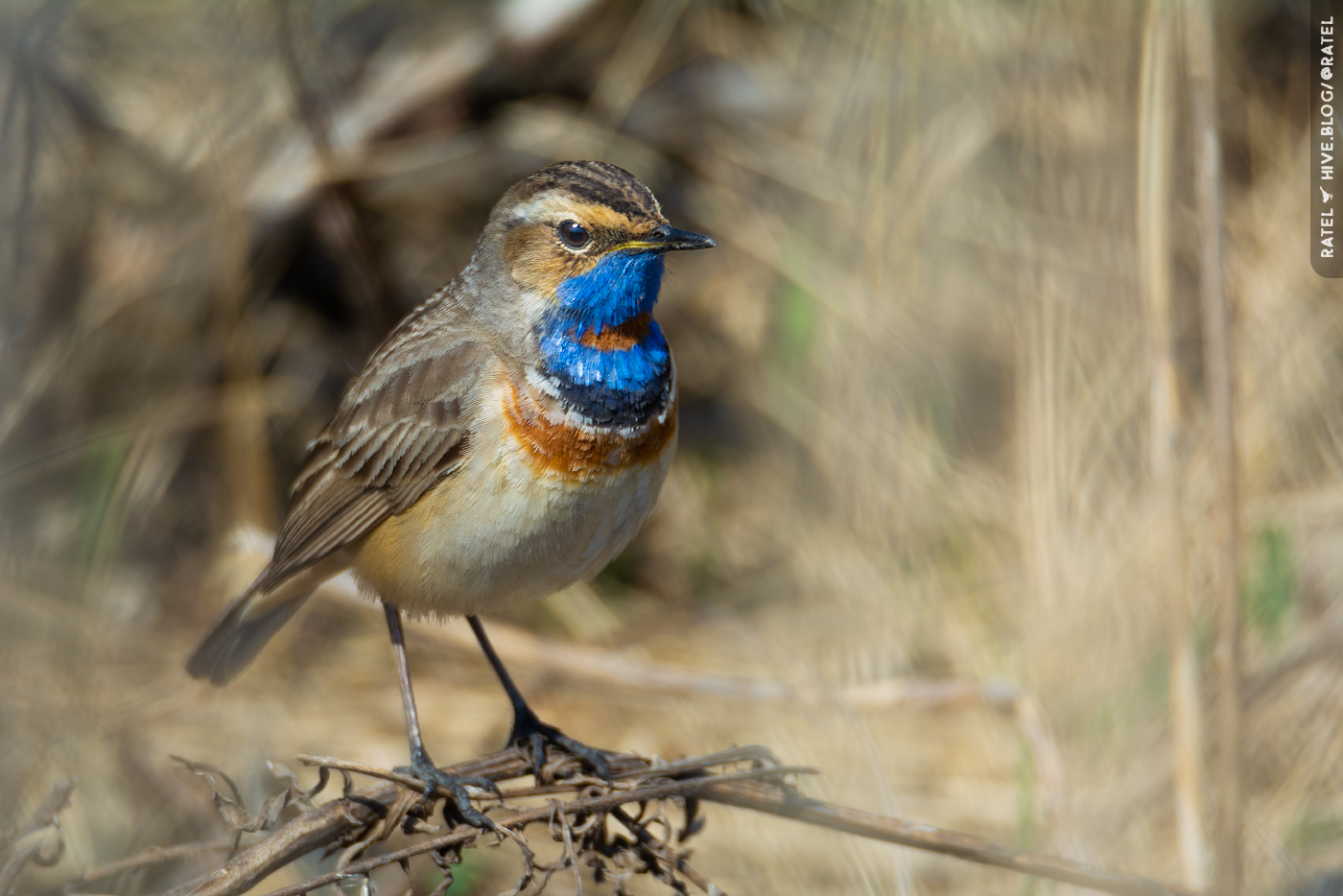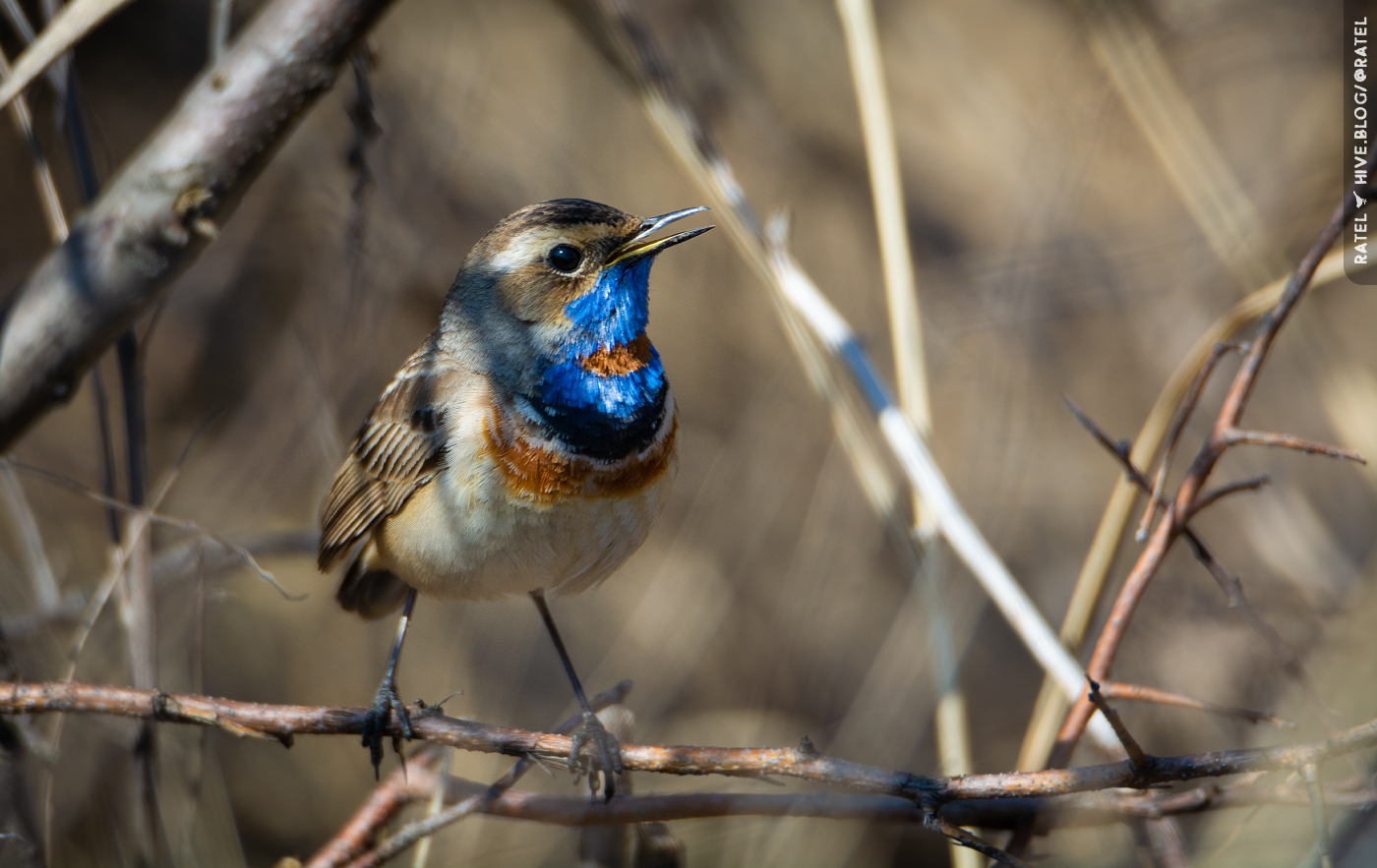
🦉 The bluethroat (Luscinia svecica)
- Luscinia (lat.) Nightingale
- svecica suecicus (lat.) Swedish; the name svecica, according to the history of the description, is not a toponym, but is given for the color of the male's chest:
Olof Rudbeck junior, Swedish botanist and birdwatcher, mentor to Carl Linnaeus, having discovered the bluethroat in 1695 in Lapland, he gave it the name Avis Carolina in honor of the Swedish king Charles XI and the blue-yellow Swedish flag (in those days the yellow color on the flag was more reddish), and K. Linnaeus in 1758, when the absolute power of the monarchy in Sweden was no longer, considered the name svecica more correct than carolina (Jobling, 2010)

In the spring, passing by bushes near a river or in meadows, you can hear an interesting hasty song consisting of various sounds, namely parts of the voices of different birds.
It is the male who sings a song and, during periods of maximum activity, often flies up into the air with a song and, with his wings and tail spread wide, plans back along a winding trajectory.

At this time they are easy to observe. And it’s easy to lure them out of the bushes if you turn on the voices of these birds on your phone. The male will immediately jump out of the deep bushes into an open place and begin to sing more intensely. But with the arrival of summer, the songs stop, and the birds lead a hidden lifestyle, almost unnoticed. This is especially true for females.

| Camera | Lens |
|---|---|
| Nikon D5200 | Tamron SP AF 150-600mm f/5-6.3 Di VC USD |